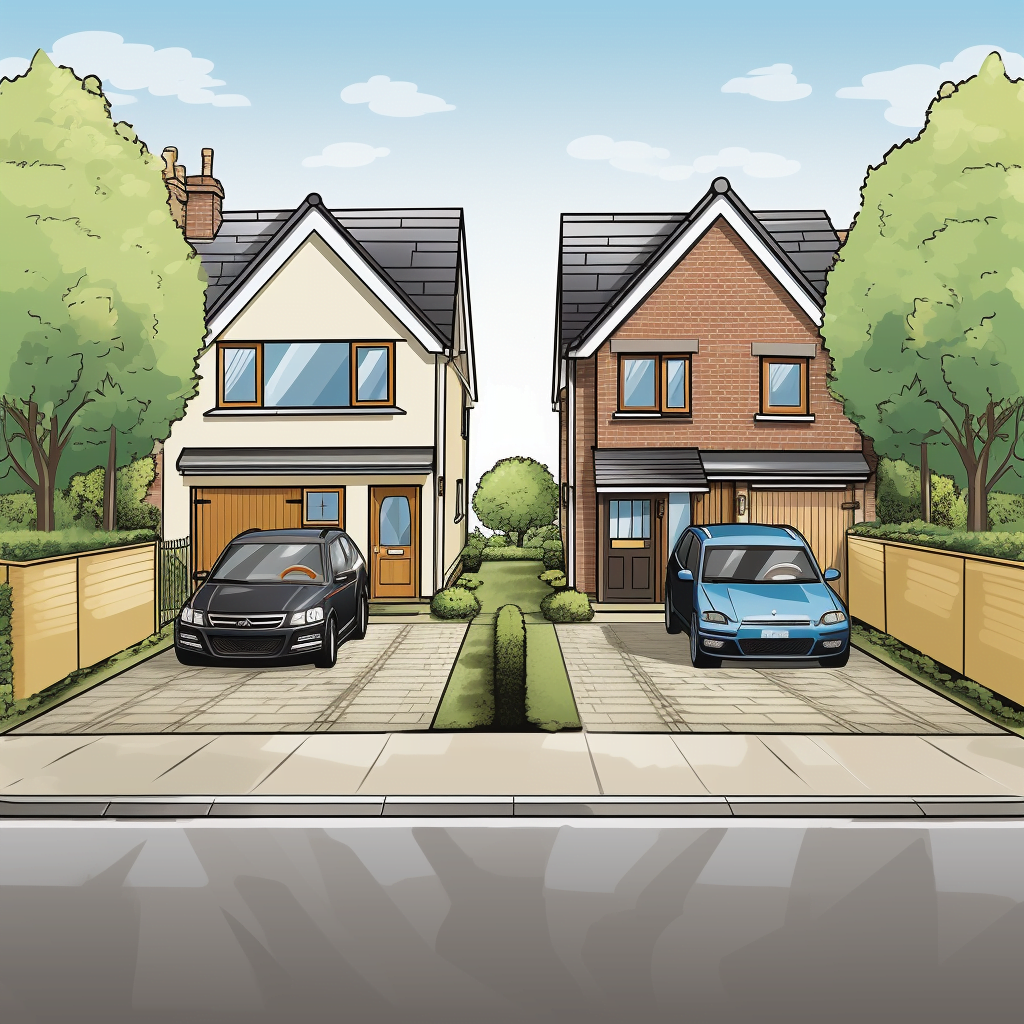Shared driveways are a common feature in many residential areas, offering a practical solution for homes with limited frontage or those built close together. However, while they can be convenient, shared driveways can also be a source of tension between neighbours. This article delves into the intricacies of shared driveways, highlighting common issues and offering solutions to maintain harmony.
- Introduction
- Benefits of Shared Driveways
- Common Issues with Shared Driveways
- Resolving Disputes
- Best Practices for Shared Driveway Maintenance
- Conclusion
Introduction
Shared driveways, often seen in terraced houses or semi-detached properties, are driveways used by multiple households. While they can be a space-saving solution, they come with their own set of challenges.
Benefits of Shared Driveways
- Space-Efficient: In areas with limited space, shared driveways allow multiple properties to have vehicle access without each home needing a separate driveway.
- Cost-Effective: Shared driveways can reduce construction and maintenance costs as expenses are often divided between households.
- Community Building: When managed well, sharing a driveway can foster a sense of community and cooperation between neighbours.
Common Issues with Shared Driveways
- Parking Disputes: One of the most common issues is where and how vehicles are parked, especially if space is limited or if one household has multiple vehicles.
- Maintenance Responsibilities: Disagreements can arise over who is responsible for repairs, upkeep, and the associated costs.
- Access Issues: Problems can occur if a parked vehicle blocks access for another household.
- Boundary Confusion: Without clear demarcation, it can be unclear where one property’s responsibility ends and another’s begins.
Resolving Disputes
- Open Dialogue: Regular communication between neighbours can preemptively address many issues before they escalate.
- Written Agreement: Having a clear, written agreement outlining each household’s responsibilities and rights can prevent misunderstandings.
- Mediation: If disputes arise, a neutral third party can help mediate and find a resolution.
- Legal Counsel: In extreme cases, seeking legal advice can clarify rights and responsibilities.
Best Practices for Shared Driveway Maintenance
- Regular Check-ins: Periodic meetings or check-ins can ensure all parties are on the same page regarding maintenance and usage.
- Clear Boundaries: Physically marking boundaries, whether through plants, stones, or other markers, can clarify areas of responsibility.
- Shared Costs: Setting up a shared fund for maintenance can ensure that costs are divided fairly and that funds are available when needed.
Conclusion
While shared driveways offer many benefits, they also come with challenges. With open communication, clear agreements, and a spirit of cooperation, neighbours can navigate the complexities of shared driveways and maintain a harmonious living environment.
Note: This article is intended for informational purposes only and does not constitute legal advice. Always consult with a legal professional before taking any action.


